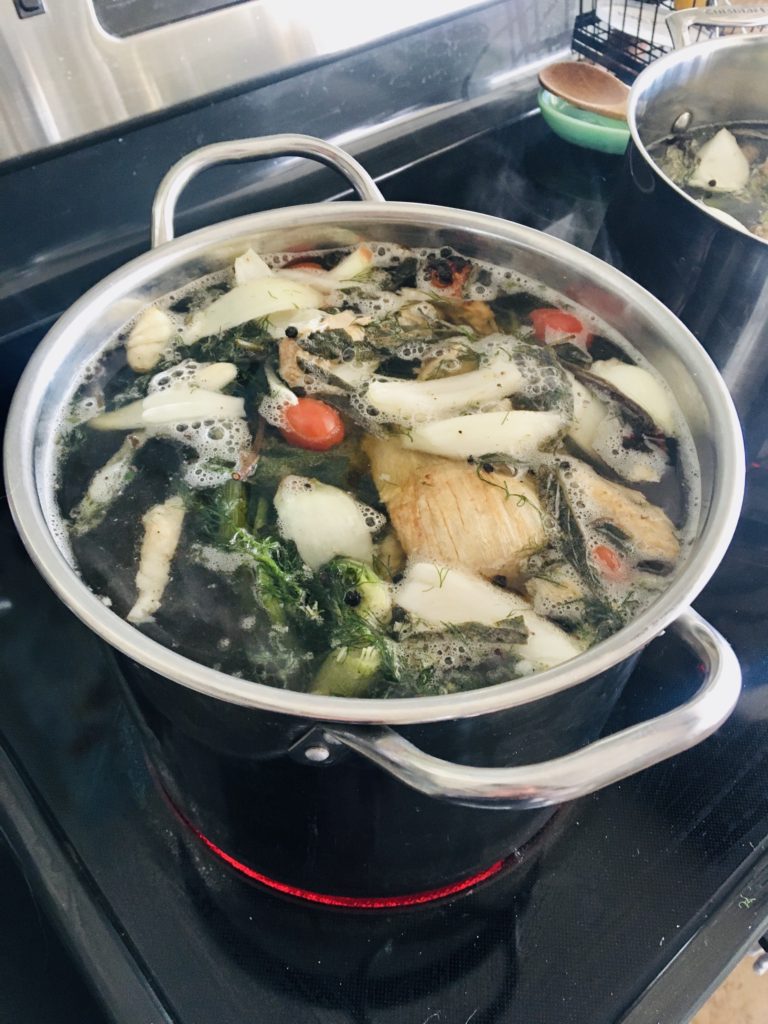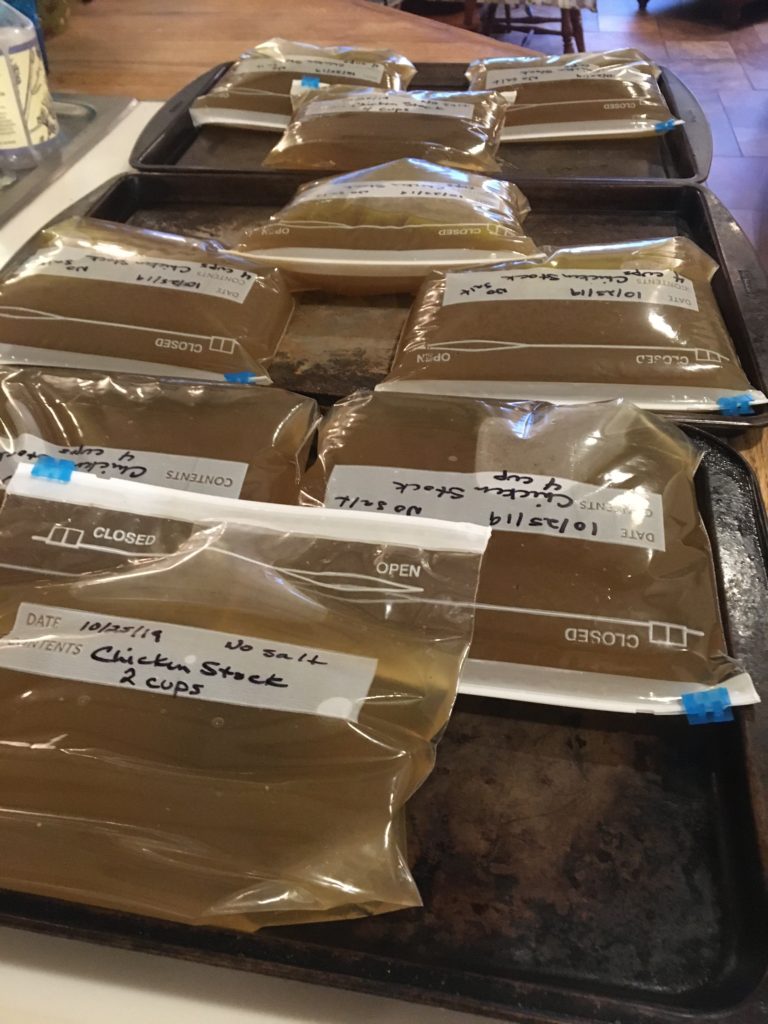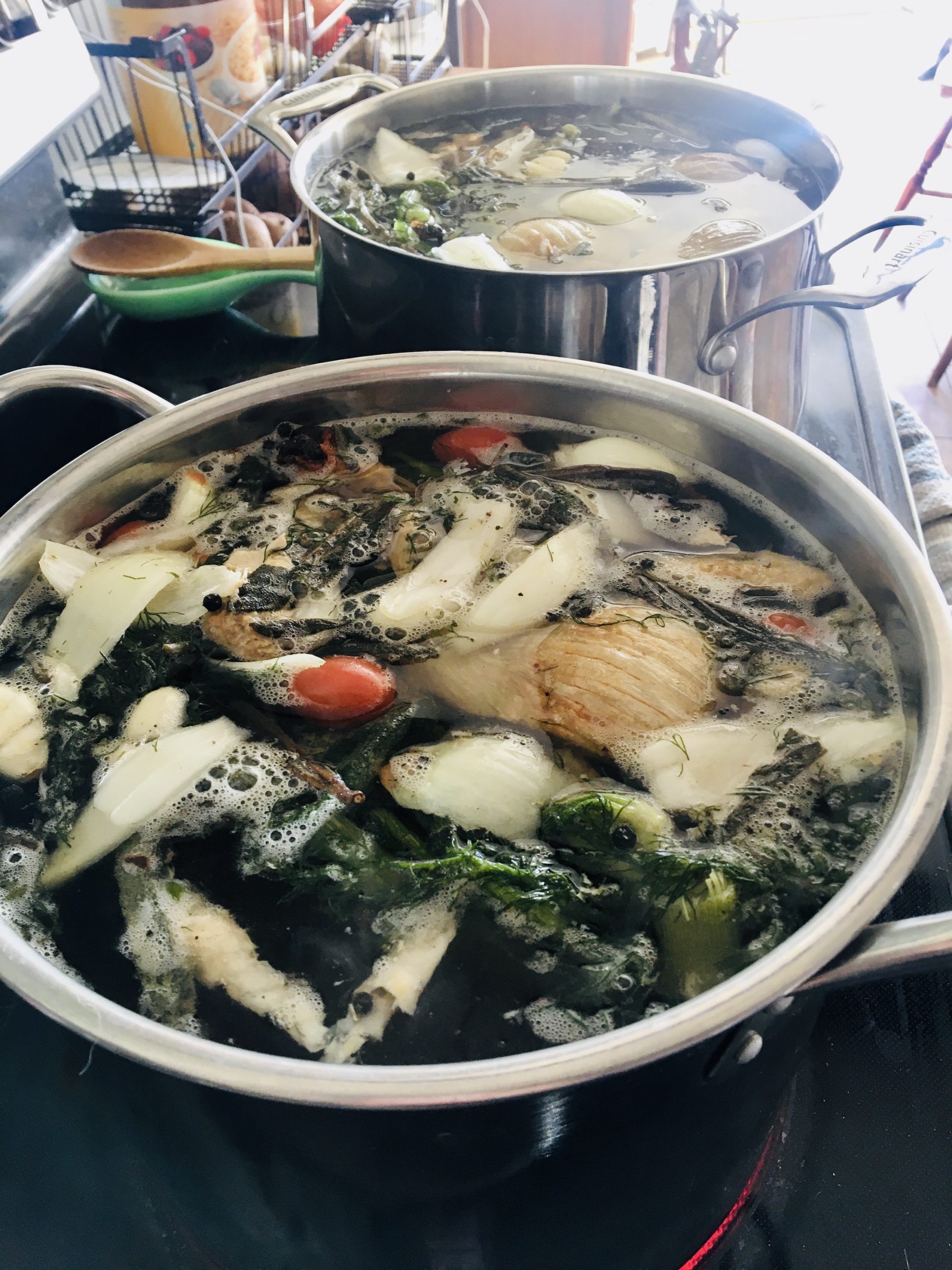Homemade Chicken Stock
One of the kitchen tasks that I find most satisfying is making homemade stock from leftover meat bones. You’re literally taking what would otherwise be garbage and turning it into a nutritious, tasty, valuable commodity.
At my local grocery store, their brand of non-organic stock costs $2.49/quart and is chock full of sodium, to say nothing of weird ingredients like “yeast extract.” What is that, even? As of this writing, organic chicken stock from a popular national brand costs a whopping $8/quart. By comparison, I purchased a whole USDA organic chicken for $12 and got two meals out of it before tipping its leftover bones into my stock pot. I’ll get a little more than four quarts of organic stock from the recipe below. In financial terms, that’s a value of up to $32! In terms of the health benefits, it’s worth so much more.


So now that I’ve convinced you of the merit of making your own stock, you’ll be delighted to know that it couldn’t be simpler. Although I have provided a recipe for reference, I never follow one. At all times, I have heavy duty zipper bags in the freezer into which I deposit meat bones and vegetable scraps until it’s time to make a batch of stock. Then when the time comes, I simply dump them into a stock pot, supplement with any flavor elements that are lacking in the scraps, and cover with water. Most recently, my vegetable scrap bag contained a couple bulbs of fennel, a handful of cherry tomatoes, and some sage. To that I added a couple of roughly chopped carrots, an onion, and a clove of garlic. If there hadn’t been fennel, I’d have also added celery to round out the aromatics that are so essential for building flavor. Sometimes my vegetable scrap bag has included such diverse items as rutabaga and asparagus. It’s all good. Same goes for herbs — add any savory herbs you have on hand that you enjoy. Thyme, parsley, and rosemary would all be excellent choices. Dry herbs can be substituted in a pinch, but it will be difficult to strain them out completely, so they will likely be visible in whatever you cook with the stock.
Once I’ve added bones and vegetables, I toss in about a tablespoon of whole peppercorns for flavor and a tablespoon of apple cider vinegar, which you do not taste at all in the finished stock but which helps extract the nutrients from the bones as well as break down the collagen, resulting in a thicker, richer stock. I do not salt my stock because I prefer to salt to taste the dish I’m using it in, but if you are planning to drink the stock as-is, wait until it’s finished and you’ve strained the bones and scraps out, then add salt 1/2 teaspoon at a time until you like the way it tastes. (You’ll probably end up using 1 to 1 1/2 teaspoons, for reference.)
I use this stock in everything from soup to risotto and rice pilaf to casseroles. It has really taken my cooking up a notch. Give it a try and I guarantee and you’ll never go back to store bought culinary stock!
P.S. I use stock and broth interchangeably. Actually, I don’t use broth at all. Broth is dead to me. I use stock for everything.
Homemade Chicken Stock

Notes
Will keep in refrigerator for 3-4 days. Freeze for up to a year.
If you have extra, try freezing it in ice cube trays and then storing cubes in a freezer bag. These are great for when you need just a little stock to add to a sauce and don't want to thaw a full quart.
Ingredients
- Bones from one whole chicken (or approx. 1.25 pounds bones)
- 2 stalks celery or 1 bulb fennel, roughly chopped
- 1 carrot, roughly chopped
- 1 onion, peeled and roughly chopped
- 1-2 cloves garlic, peeled and smashed
- 1-2 bunches fresh herbs
- 1 tbsp. peppercorns
- 1 tbsp. apple cider vinegar
- enough water to fill stock pot
Instructions
- Place all ingredients in a 8-quart stock pot and fill with water, leaving about an inch at the top of the pot so it doesn't boil over.
- Bring to a boil and reduce heat to simmer.
- Allow to simmer for 3-4 hours, then top off with additional water.
- Continue to simmer another 3-4 hours.
- Strain through a fine mesh sieve into a clean, heat-safe container.
- Allow to cool on the counter for a couple of hours and divide into quart jars or freezer bags.


You May Also Like

Fresh Pea Soup
July 26, 2018
Pork Lo Mein
January 14, 2019
